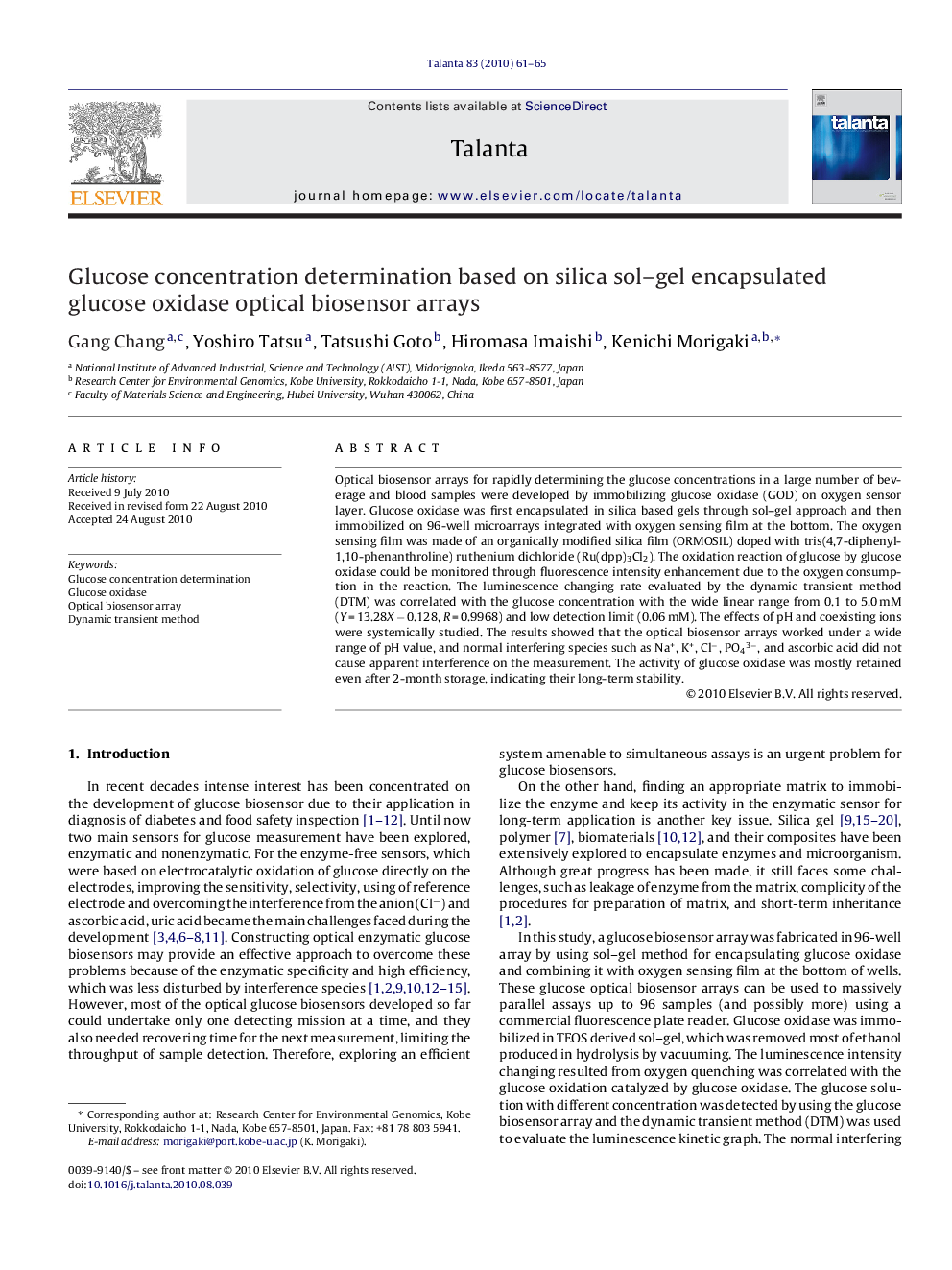| Article ID | Journal | Published Year | Pages | File Type |
|---|---|---|---|---|
| 1242461 | Talanta | 2010 | 5 Pages |
Optical biosensor arrays for rapidly determining the glucose concentrations in a large number of beverage and blood samples were developed by immobilizing glucose oxidase (GOD) on oxygen sensor layer. Glucose oxidase was first encapsulated in silica based gels through sol–gel approach and then immobilized on 96-well microarrays integrated with oxygen sensing film at the bottom. The oxygen sensing film was made of an organically modified silica film (ORMOSIL) doped with tris(4,7-diphenyl-1,10-phenanthroline) ruthenium dichloride (Ru(dpp)3Cl2). The oxidation reaction of glucose by glucose oxidase could be monitored through fluorescence intensity enhancement due to the oxygen consumption in the reaction. The luminescence changing rate evaluated by the dynamic transient method (DTM) was correlated with the glucose concentration with the wide linear range from 0.1 to 5.0 mM (Y = 13.28X − 0.128, R = 0.9968) and low detection limit (0.06 mM). The effects of pH and coexisting ions were systemically studied. The results showed that the optical biosensor arrays worked under a wide range of pH value, and normal interfering species such as Na+, K+, Cl−, PO43−, and ascorbic acid did not cause apparent interference on the measurement. The activity of glucose oxidase was mostly retained even after 2-month storage, indicating their long-term stability.
